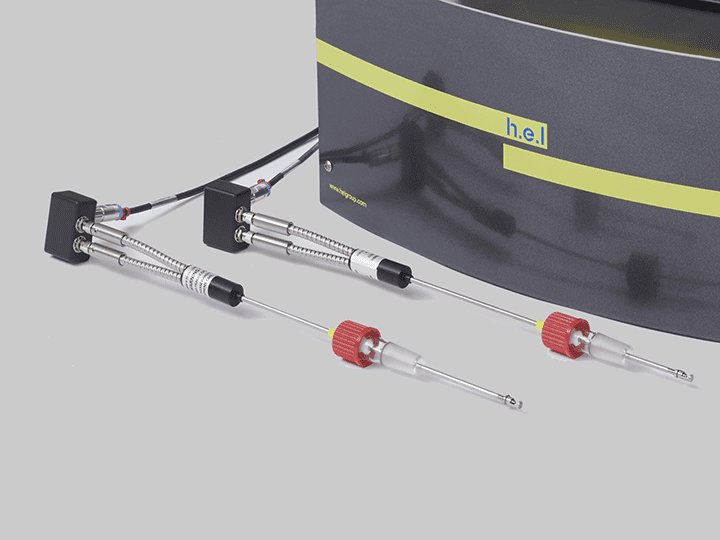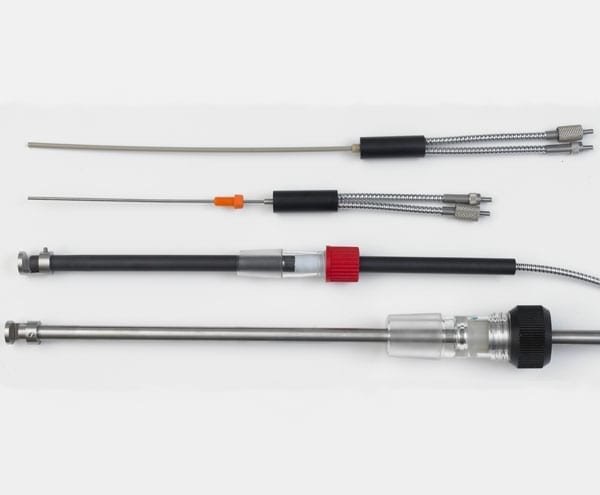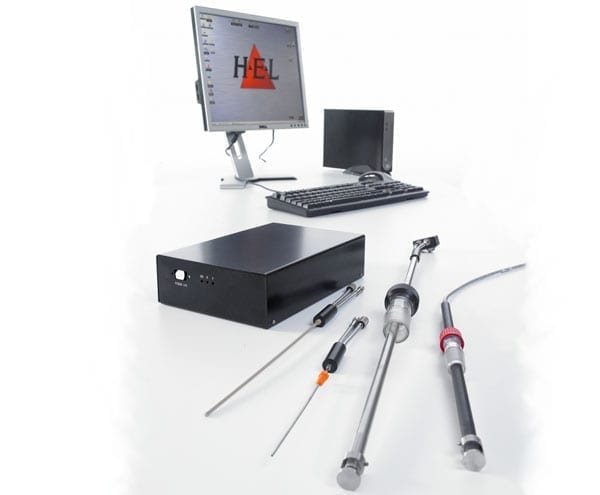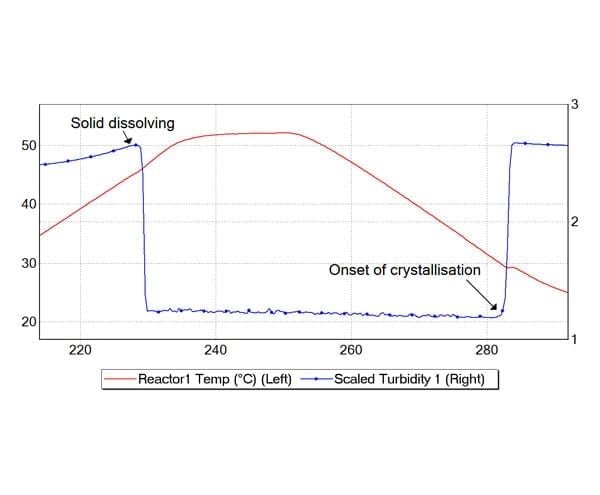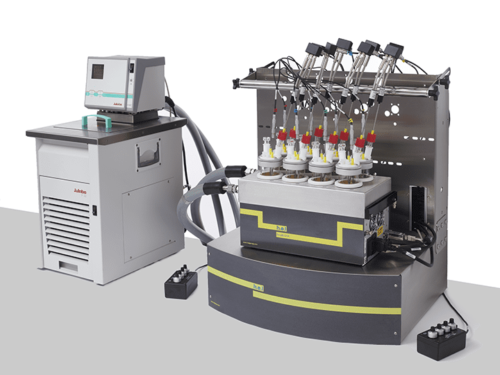CrystalEYES | Crystallization Monitoring Sensor
Easily Determine Solubility…
The need to study crystallization is widespread in the chemical industry due to the importance of solids as the final form of many products. H.E.L’s CrystalEYES makes it easy for chemists to determine the crystallisation and dissolution points of their solutions.
Crystal Eyes monitors and logs temperature, turbidity, and pH. The system includes a choice of probes, signal conditioning electronics, and a compact PC with preloaded software ready to use. H.E.L offers a range of probes for any scale: from a test tube (~2 ml) to a bench-scale (5 L). All probes are available in PEEK, stainless steel, or Hastelloy. Want to work at different scales?- Simply change the probe, no other changes needed to the electronics or software. The data is automatically recorded into .csv format, making it readily importable to Excel, or similar packages for analysis.
Publications
The following are a list of some technical publications which highlight the use of the equipment.
Effects of Various Inhibitors on the Nucleation of Calcium Oxalate in Synthetic Urine
Yu-Chao Hsu, Yi-Hsuan Lin, Lie-Ding Shiau
01-Apr-2020
https://doi.org/10.3390/cryst10040333(Subscription or purchase maybe required for full access)
A practical guide to the measurement of turbidity curves of cooling crystallisations from solution
Simon J. Coles ORCID logo and Terence L. Threlfall
01-Feb-2020
https://doi.org/10.1039/C9CE01622H(Subscription or purchase maybe required for full access)
Determination of Solubility and Nucleation Kinetics of Valnemulin Hydrochloride Solvate
Jinbo Ouyang, Bing Na, Zhirong Liu, Limin Zhou, Hongxun Hao
01-Mar-2019
https://doi.org/10.1007/s10953-019-00861-7(Subscription or purchase maybe required for full access)
The temperature dependence of the pre-exponential factor and interfacial energy for aqueous glycine solutions based on the metastable zone width data
Lie-Ding Shiau
01-May-2018
https://doi.org/10.1016/j.jcrysgro.2018.05.020(Subscription or purchase maybe required for full access)
Solid-liquid equilibrium for proteins in solutions with an unconventional salt (ammonium carbamate): Phase behavior analysis
G. Hirata, P. Filho, E. Miranda
01-Apr-2017
https://doi.org/10.1016/j.fluid.2017.03.031(Subscription or purchase maybe required for full access)
Efficient Solvent Selection Approach for High Solubility of Active Phytochemicals: Application for the Extraction of an Antimalarial Compound from Medicinal Plant
Souhila Laboukhi-Khorsi,†,‡ Kamel Daoud,‡ and Smain Chemat
01-Mar-2017
https://doi.org/10.1021/acssuschemeng.7b00384(Subscription or purchase maybe required for full access)
Effect of silica nanoparticles to prevent calcium carbonate scaling using an in situ turbidimetre
W.N.Al NasseraU.V.ShahbK.NikiforoubP.PetroubJ.Y.Y.Hengb
01-Dec-2015
https://doi.org/10.1016/j.cherd.2015.12.006(Subscription or purchase maybe required for full access)
Metastable Zone Widths, Conformational Multiplicity, and Seeding
Terence L. Threlfall,* Russell W. De’Ath, and Simon J. Coles
01-Feb-2013
https://doi.org/10.1021/op3003486(Subscription or purchase maybe required for full access)

